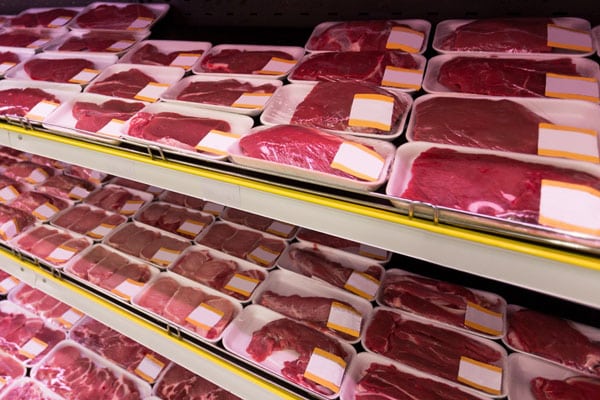This post may include affiliate links.
If you make a purchase, I'll earn a small fee at no extra cost to you.
Do you ever sit down with the grocery ads and feel like you’re in the middle of one of those horrible word problems from math class?
Store A has boneless chicken breasts on sale for $2.39 a pound.
Store B has bone-in chicken breasts on sale for $1.89 a pound.
How can Mama get the most meat for her grocery budget?
This sort of question used to make my head spin. At first, I figured I should just buy the bone-in chicken, because it appears to be cheaper. But when you buy bone-in, you’re paying for something that you’re just going to throw away.
Should I weigh the bones and compare to the total weight? Should that weight be before cooking or after cooking? Now this is starting to sound like a science fair project…sigh.
Which one is the better deal? I asked my Great-Uncle Ray, who was a professional butcher for 40+ years. Old-school butchers really know their stuff!
He taught me this amazing trick for figuring out the price difference between boneless and bone-in meat. Bone-in chicken is about one-third waste; bone-in pork is about one-sixth waste; bone-in beef is about one-fifth waste.
Here’s the secret:
- Chicken with bones: multiply the price by 1.5 to get the boneless equivalent
- Pork with bones: multiply the price by 1.2
- Beef with bones: multiply the price by 1.25
- Hamburger (80% lean): multiply the price by 1.2 to get the actual price per pound (you won’t be eating the 20% fat, right?)
With our chicken example above, you would multiply $1.89 x 1.5. The bone-in chicken is actually $2.83 per pound!
Bring your calculator to the store (or play it cool and use the one on your phone) and do the math before buying meat. You can also put this info in your price book so you’ll remember to do the math when you see the grocery ads each week.






